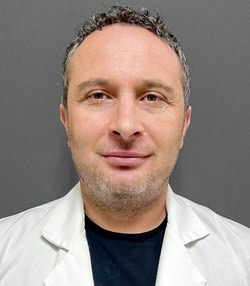
I had my BS degree at Bogazici University in Istanbul, Turkey. I worked as a research assistant for a year at Baylor College of Medicine in Houston, TX before joining the Developmental Biology PhD program in Dr. James B. Skeath’s laboratory at Washington University in St Louis, MO. After my PhD and a brief post-doctoral work, I moved to Washington D.C. area for my post-doctoral studies. I worked under the mentorship of James W. Truman in HHMI’s Janelia Research Campus. After my post-doctoral studies, I joined the Department of Genetics at Washington University as a research faculty member until the end of 2022. In the beginning of 2023, I joined the Division of Biology and Biomedical System in the School of Science and Engineering at University of Missouri Kansas City.
In a nutshell, my research aims to understand how a complex nervous system is built during development. Each neural stem cell generates a unique population of neurons, which we call neuronal lineages. In our nervous system, neurons from millions of distinct neuronal lineages interact with one another to form functional networks. Each network - called a neuronal circuit - controls a unique human behavior, e.g., decoding visual information coming from the eyes or commanding quadriceps muscles for kicking a soccer ball. My research investigates how each neuronal lineage is generated and how they come together to form neuronal circuits controlling vital behaviors. To address these questions, I study the assembly of the nerve cord (equivalent to our spinal cord) of the humble fruit fly, Drosophila. Like our spinal cord, the fly nerve cord shows lineage-based organization, but with neuronal lineages whose number is reduced by several magnitudes. In total, 34 distinct neuronal lineages form the fly nerve cord. Over the years, I have generated genetic handles to target and study individual neuronal lineages and with these tools, I have started elucidating the genetic, cellular, and molecular control of neuronal connectivity and animal behavior.
What attracted me to UMKC is its collegiality. I find it very easy talking to other fellow faculty in the school about professional and nonprofessional topics. Kansas City’s medium size and its vibe were also important factors for why I choose to continue my career at UMKC. We have recently bought a house and we plan to stay in the KC area for a long time. I love spending time with my cat and dog, breaking and fixing things in our new house, and gardening with my wife.